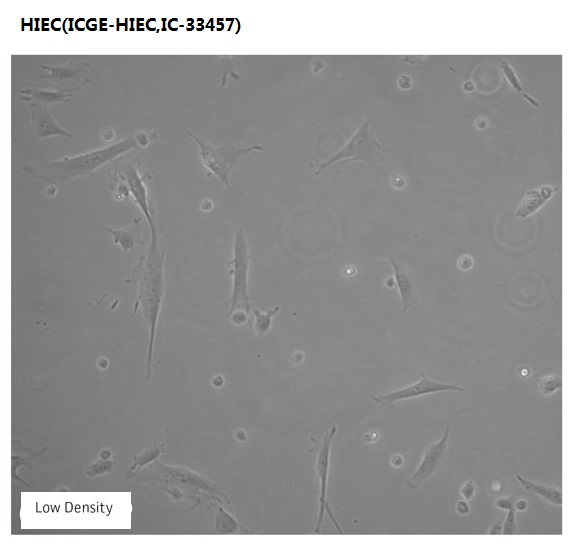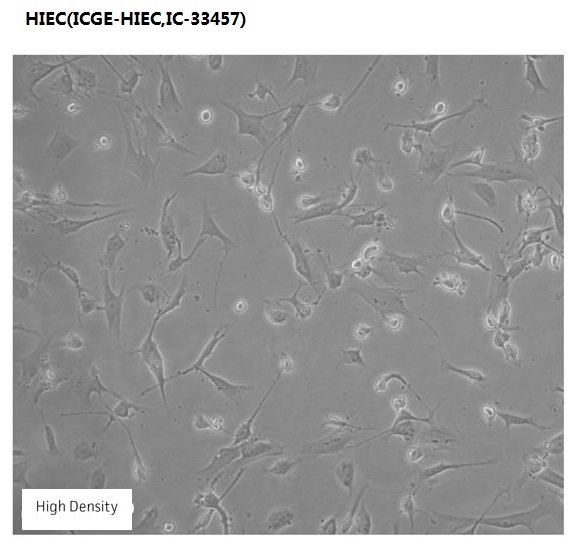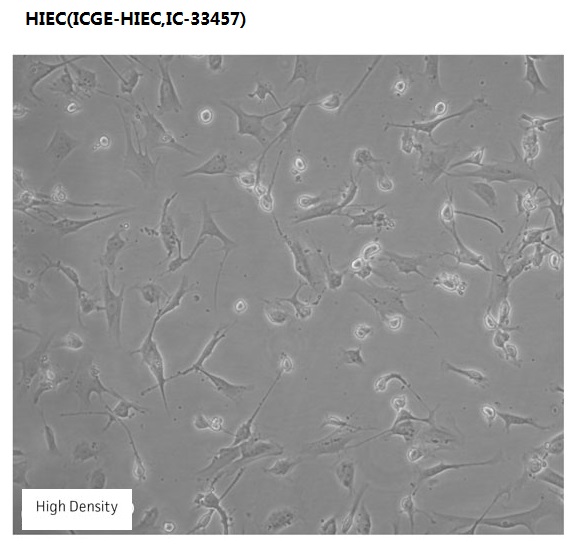


Overview
OrganismHomo sapiens, humanTissuesmall intestineCell TypeepitheliumProduct Formatfrozen 1.0 mLMorphologyepithelial-likeCulture PropertiesadherentBiosafety Level1
DiseasenormalAge17 to 19 week gestationApplications
Biosafety classification is based on U.S. Public Health Service Guidelines, it is the responsibility of the customer to ensure that their facilities comply with biosafety regulations for their own country.
Investigation of the regulation of normal intestinal cell proliferation, survival, stemness, as well as studies of the molecular mechanisms leading to lineage-specific differentiation. Also used for the study of the effects of hormones, growth factors, extracellular matrix molecules, drug metabolism and carcinogenic factors on small intestinal functions.
Frequently used as normal control cells for studies dealing with colorectal cancer cell lines.
Storage Conditionsliquid nitrogen vapor phaseProperties
|
|
|
|---|---|
| Derivation | HIEC-6 cells were isolated by thermolysin treatment of a human fetal small intestine. |
| Antigen Expression | cytokeratin-8 +, cytokeratin-18 +, cytokeratin-21 +, mouse intestinal mucosa (MIM-1/39) +, aminopeptidase N (APN) +, dipeptidyl-peptidase IV (DPPIV) + |
| Tumorigenic | no |
| Comments | This is a continuously growing human intestinal epithelial cell line which expresses epithelial cytokeratins and functional markers for intestinal crypt cells. They exhibit typical intestinal crypt cell proliferative and undifferentiated characteristics. |
Background
Complete Growth MediumThe base medium for this cell line is OptiMEM 1 Reduced Serum Medium (Gibco Catalog No. 31985). To make the complete growth medium, add the following components to the base medium:
SubculturingVolumes are given for a 75 cm2 flask. Increase or decrease the amount of dissociation medium needed proportionally for culture vessels of other sizes.
Atmosphere: Air, 95%; Carbon dioxide (CO2), 5%
- 20 mM HEPES
- 10 mM GlutaMAX (Gibco Catalog No. 35050)
- 10 ng/mL Epidermal Growth Factor (EGF)
- fetal bovine serum (FBS) to a final concentration of 4%
SubculturingVolumes are given for a 75 cm2 flask. Increase or decrease the amount of dissociation medium needed proportionally for culture vessels of other sizes.
- Remove and discard culture medium.
- Briefly rinse the cell layer with Ca++/Mg++ free Dulbecco''''''''s phosphate-buffered saline (D-PBS) (ATCC® 30-2200) or 0.25% (w/v) Trypsin-0.53 mM EDTA solution (ATCC® 30-2101) to remove all traces of serum that contains trypsin inhibitor.
- Add 2.0 to 3.0 mL of Trypsin-EDTA solution to flask and observe cells under an inverted microscope until cell layer is dispersed (usually within 5 to 15 minutes). Note: To avoid clumping do not agitate the cells by hitting or shaking the flask while waiting for the cells to detach. Cells that are difficult to detach may be placed at 37��C to facilitate dispersal.
- Add 6.0 to 8.0 mL of complete growth medium and aspirate cells by gently pipetting.
- Add appropriate aliquots of the cell suspension to new culture vessels.
- Incubate cultures at 37��C.
Medium Renewal: Every 2 to 3 days
Culture ConditionsTemperature: 37��CAtmosphere: Air, 95%; Carbon dioxide (CO2), 5%


